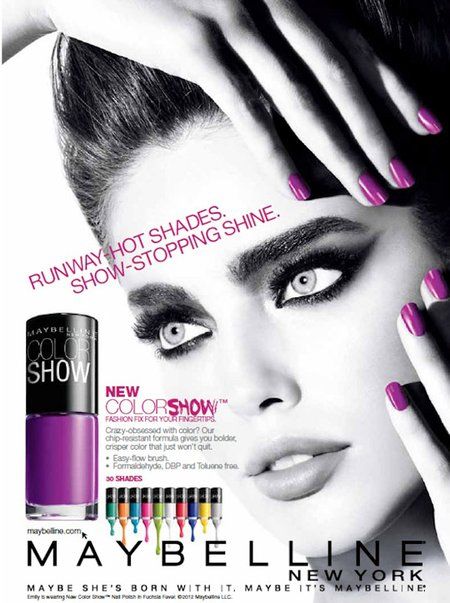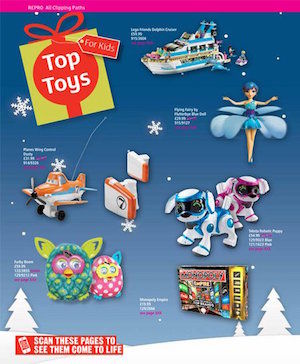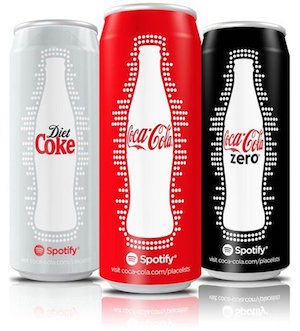Jess Butcher, the director and co-founder of augmented reality app Blippar, is speaking at our Shift London event in May, so to prepare for this occasion, we thought we’d get fully immersed in the world of AR.
Put simply, AR is the technology that superimposes computer generated imagery onto the real world when looked at through a portable device. But, as marketers have discovered, AR can be so much more.
AR has not only succeeded where QR codes failed, but it has quickly shut down any opinion that its technology is gimmicky. No longer is AR the stuff of ‘oh look at this funny animation protruding out of a cola can’. Now genuinely useful experiences can be achieved to help your customers, clients and service providers in a real-life practical way.
Let’s take a look at some of these experiences…
The first three examples are taken from Blippar’s own case studies:
Maybelline, L’Oreal
To promote a new line of nail polish, Maybelline ran print ads in several US magazines giving readers the unique opportunity to virtually try on the new range of colors.

The average reader engaged for more than four minutes, and more than 10% of users shared the campaign on social media. The campaign also helped Maybelline predict which colors were trending each week.
Argos
Argos made its holiday catalogue shoppable with the Blippar app by letting readers ‘blipp’ the pages to instantly buy items. This led to 21,000 customers sharing the campaign on social media, and more than 929,000 interactions were recorded over 10 weeks.

Coca-Cola & Spotify
Coca-Cola, turned its 250ml cans into portable interactive Spotify jukeboxes. Users could use their smartphone to listen to the top 50 UK songs at that moment on Spotify by holding a can up to the screen.

Healthcare
As TechRepublic reported in 2o15, AR is making itself incredibly useful in the healthcare industry. The following examples are taken from Brian Wassom’s talk at last year’s Augmented World Expo in Santa Clara:
ARnatomy
To replace the giant, unwieldy anatomy text books that all medical students have to leanr, ARnatomy uses AR to pinpoint exactly the type of bone being studied, revealing all of its information on screen and lets allows users the ability to manipulate a tangible skeletal model.
Vipaar
Vipaar is a video support solution whereby a remote surgeon could project his hands onto the display of a surgeon on site wearing AR enabled glases and point and guide the hands of the surgeon.
AccuVein
AccuVein’s Vinny Luciano states that 40% of IVs miss on the first attempt at finding a vein, so they invented a scanner that projects over skin and shows nurses and doctors where various veins, valves and bifurcations are in a patient’s body. This has been used on more than 10 million patients so far, and made finding a vein on the first attempt 3.5x more likely.
VA-ST Visor
The winner of the 2014 Google Impact Challenge was the VA-ST visor. These ‘smart specs’ are intended for use by people who are legally blind or partially sighted to help with every day tasks.
The software can be taught to recognise 3D objects and then identify them within a scene, this can help with finding lost items, navigating environments or mapping out familiar faces to aid recognition.
Current Studios’ MRI game
Getting a child to remain still for the length of an MRI can be very difficult, so Current Studios developed a tablet game for kids to play before the procedure, that measures their ability to lay still for extended periods of time. Doctors can see the child’s stats, and then determine whether they would need a general anesthetic.
The British Museum
Ben Davis covered five AR lessons from The British Museum in 2013, and it still stands as an excellent use-case.
A Gift for Athena helps Key Stage 2 (ages 7-11) children engage with the museum’s Parthenon gallery. It’s a simple uncluttered experience, that nevertheless provides deep learning opportunities thanks to a focus on narrative and puzzle-solving.
American Apparel
The in-store experience can be brought to digital life with AR. Here American Apparel uses it app to reveal tonnes of information on its products as well as showing customer reviews and providing the ability to buy the product online if it’s out of stock and to see it in ever available colour.
Pepsi
Pepsi brought some magic (and terror) to the streets of London in 2014 with its AR enabled billboard. While waiting for a bus, unwitting people would be able to see flying saucers, tigers and asteroids approaching them through the advert. Proving that AR doesn’t just have to be contained on a wearable or smartphone.
With 7.5 million views, this video is one of YouTube’s most watched advertising campaigns.
For lots more information on the changing realities of marketing, come to Shift London in May.
The article 11 extraordinary uses of Augmented Reality (AR) was first seen from https://searchenginewatch.com
No comments:
Post a Comment